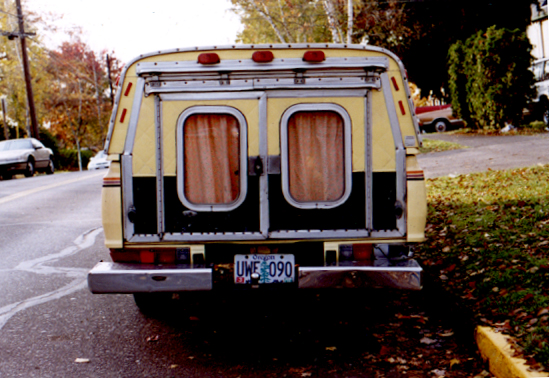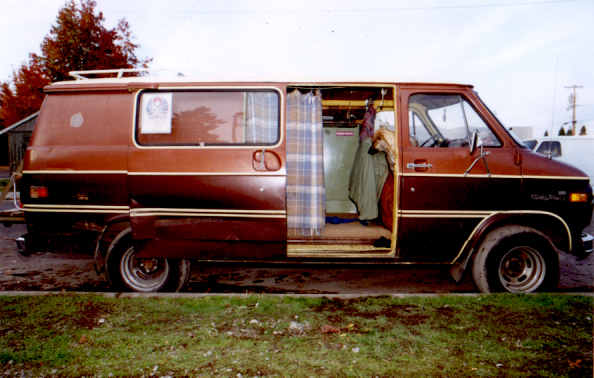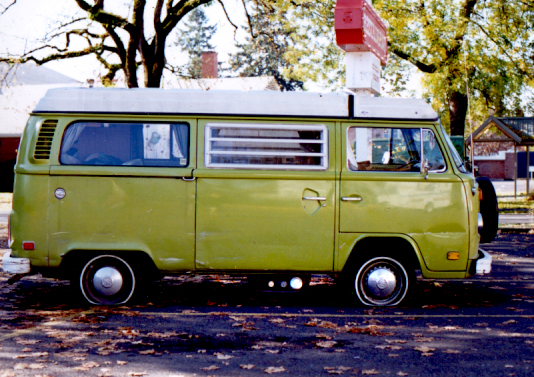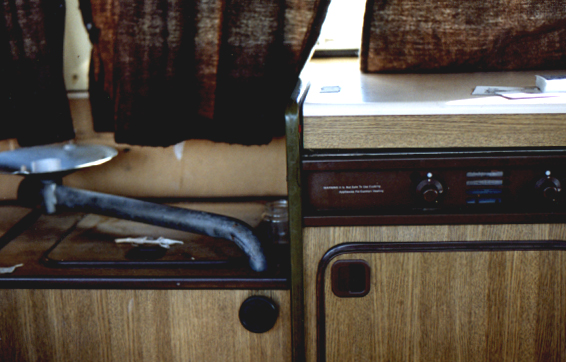A photographic study of car/residences
Interviewing car-dwellers on the streets of Eugene, we discovered two basic strategies of trying to keep warm at night in a car: self-insulation and using heat source. People who chose to self-insulate largely ignored the car as a thermal barrier, instead using wool and thermal clothing, and layers upon layers of blankets to keep warm. In heat source environments, people added vents, tanks, compartments, and even carbon monoxide warning systems to their vehicles, so that propane heaters could be installed and used safely. We chose not to modify the car in our experiment to accommodate a heating system, confident in our passive thermal insulating abilities, but we did use self-insulation. Below are pictures of thermal modifications that people made to their vehicles for habitation:
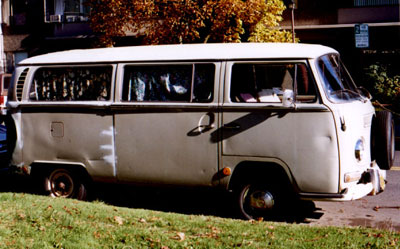
Eugene is the capital of the Volkswagon Bus!
Curtains
over the windows are easily removed and
provide insulation as well as privacy.
Permanent
foil barriers covered the windows of this bus.
The blinking
lights have been replaced with skylights.
During the day this van owner opens the van doors for complete ventilation.
This van is equiped with bed area, storage, and kitchen.
The
van door was filled with fiberglass insulation and
the van
walls and ceiling were carpeted and insulated.
VW
buses are factory built with three different fuel tanks
(notice
three caps below the van door).
The owner of the van used a solar panel to generate electricity.
VW
buses are also equiped with a sink and a stove.
The warning label reads:
It is not safe to use cooking appliances for comfort heating.

This
U-haul trailor has been fitted with a heating system and a stove.
Note
the boot racks on the door and the spice racks on the wall.

Eugene's famous bicycle bus!
